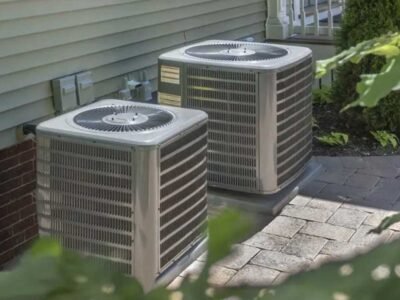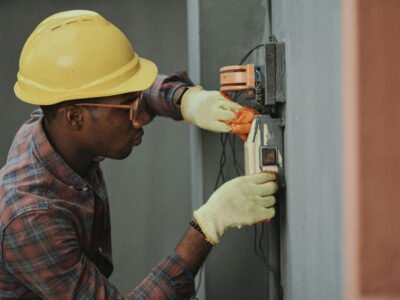When something goes wrong with your plumbing system, you need to take it seriously. Even seemingly minor issues such as puddles under the sink or leaky faucets can quickly escalate into costly damage if left unaddressed.
Not all plumbing issues are preventable, but many can be avoided through regular inspections and smart practices. Read on to understand some of the most frequent plumbing problems and how you can avoid them. And remember that you can always get a home warranty that covers plumbing, which is definitely a good idea for most homes.
Leaky Pipes
Pipes provide water circulation in your home, yet are susceptible to leaks. When a crack or break in a pipe occurs, water damage, higher bills, mold growth and mildew issues could arise that require immediate attention – thus prompting it to be addressed as quickly as possible. It’s therefore crucial that any leaky pipes be addressed swiftly.
If you notice staining on the ceiling or walls, water puddles accumulating, or a musty smell around drains in your home, there may be a pipe leak present. Also monitor your water meter for any sudden spike in usage that might indicate issues with one of your pipes.
Professional plumbers will be able to assess the severity of a leak and determine the most appropriate type of pipe repair; however, for minor leaks that are accessible (i.e. not behind walls or obstructions), there are a few simple steps you can take yourself to repair them yourself. First, switch off water flow at its source; flush any faucets connected with that pipe so as to drain any remaining water out; locate and purchase a clamp that matches both its size and type at a local hardware store before following package instructions for applying it onto it – or do nothing!
Clogged Drains
Clogged drains are every homeowner’s worst nightmare, from foul smells to water backups. But you can learn to spot potential clogs before they become larger problems.
Slow drains can be the telltale sign that something is amiss with your pipes. Clogs typically form over time as soap scum, hair, grease and other debris buildup along the pipe walls clings. If a sink or toilet drain is moving slower than expected, call a plumber immediately!
Gurgling sounds in your plumbing system may indicate air is trapped within it and are an indicator of a sewer line or septic tank clog forming.
Some individuals can repair a simple sink clog using hot water, vinegar and baking soda. Start by pouring one-half cup of table salt down the drain; wait 15 minutes; then pour hot water with baking soda and vinegar down it; you may also want to try using a power auger on larger obstructions.
If your drain remains blocked, try using a plunger, snake, or drain cleaner before reaching out for professional assistance. They have access to tools and equipment necessary for clearing it quickly before it worsens further.
Water Heater Issues
If your water heater is producing inconsistent hot water temperatures or producing too little, it’s time to consult a professional. In many instances, many issues with the unit can be remedied without needing to completely replace it; pilot light issues on gas heaters are among the most frequently experienced. Burnt-out pilot lights or those obstructed can stop gas being delivered properly; also thermostat settings could be set too high which can easily be adjusted by accessing and gaining entry to it for adjustments – please reach out and speak to a plumber today; they are ready and waiting 24/7 to service any and all your plumbing needs!
Sewage Backup
Nothing can be as annoying and potentially hazardous to a home than having to deal with sewage backup in their own environment. Unfortunately, it can occur without warning due to factors beyond your control, including damage or age of main sewer line pipes, heavy rainstorms or tree roots clogging them up.
Your house contains both incoming and outgoing water lines that lead to drains throughout your home, such as toilets and sinks. Incoming lines take in freshwater from outside while wastewater (sewer) lines take away used waste from bathrooms and kitchens. When these sewer lines become blocked up, this can cause backflow into drains and toilets throughout the house, potentially flooding them entirely.
Depending on the severity of the clog, there may be ways for you to remedy it yourself before calling a plumber. A plunger may help dislodge solid blockages from most drains; but for more serious issues chemical cleaners that dissolve grease buildup may be required.
To effectively prevent sewage backup, the best strategy is having your sewer pipes regularly inspected. Furthermore, avoid flushing anything other than human waste and toilet paper down your drains; even items like paper towels and “flushable” personal wipes that claim to dissolve can block pipes if they do not completely disintegrate.

















Comments